Stretching at the barre
Ballet dancing is not just a feast for the eyes. It is also a graceful way of attaining balance and working on your core region extensively.

More than a performance, ballet dance is a good way to attain strong limbs. Ballet exercise strengthens the muscles of inner thighs, back of the legs, core and butt. These ballet stretches and more can be your 15 minute daily morning routine, to calm you down, stretch you out, and make you well composed, fresh and all set for the day. More serious dancers can make this routine into 30-40 minutes long, by adding more stretches and exercises to it. These have to be performed on a barre — a horizontal rod that is used as a gentle support for stretching, and as a warm up before moving onto more intense dance routines.
Leg on the barre stretch: (stretches out the hamstring muscles)
Lift your leg and place it on the barre, keeping your toes pointed. Next, breathe in, lift the opposite arm to fifth position (above your head) and bend sideways from the waist towards the leg. Take 8 counts to go into the position and 8 counts to get back. Repeat this movement 4-5 times on each leg.
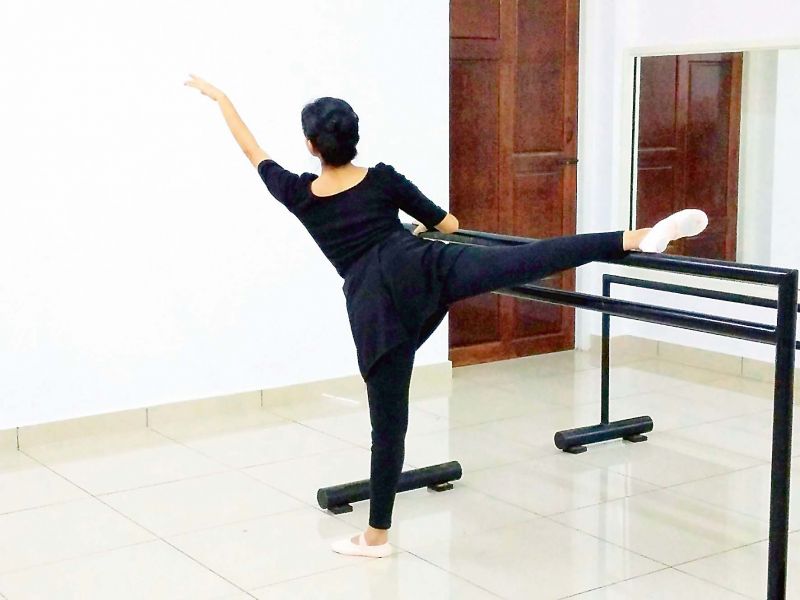
Arabesque stretch
The arabesque stretch on the barre helps to improve the ballet arabesque pose, helping to improve the flexibility of the back and strengthening the leg.
Raise one leg on the barre behind you. Keep your toes pointed and legs turned out and straight. Breathe in and lift your arm up to your eye level, keeping your back straight. Feel the stretch in your back and slowly release, then repeat on the other leg.
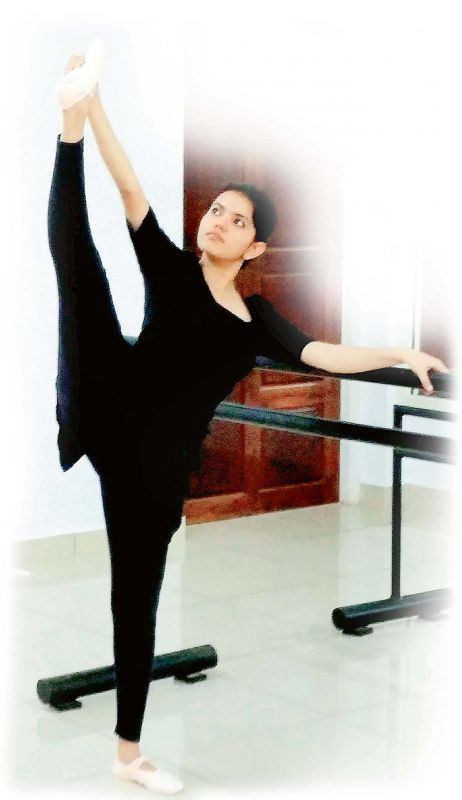
Standing Split : (helps to open up and stretch out the entire leg)
Placing one arm on the barre, lift one leg to passé /retiré . Next, hold the toe and lift your leg up as high as you can. Breathe in and slowly pull your leg closer with each breath. Hold the pose for as long as you can (at least 4-8 counts) then slowly bring the leg down. Repeat the same on the other leg.
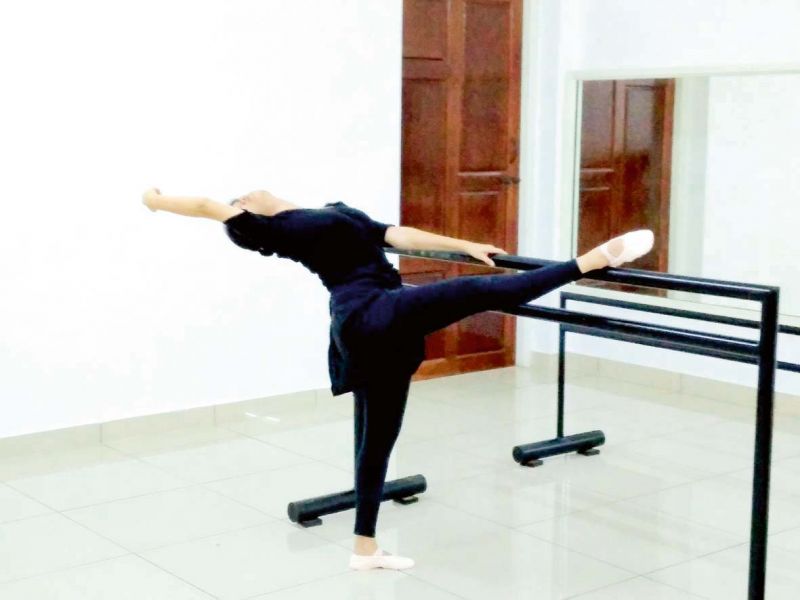
Cambré: ( A classical ballet term that means “arched”. Stretching of the upper body is called cambré)
Placing one arm on the barre, lift the other arm to fifth (above the head). Breathe in, lift and bend from your upper back backward. While stretching, keep your neck and arm aligned with your back. Cambré should also be done forward and sideways to get the complete stretch.
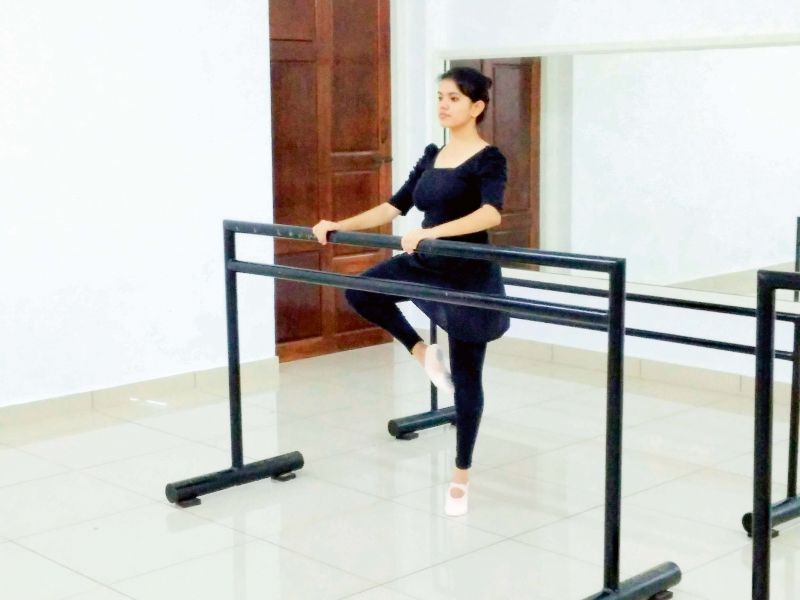
Passé /Retiré: (engages and strengthens the knees, thighs, hip — rotator muscles. Helps to tone muscles and improves balancing, while engaging core muscles.)
Place both arms or single arm on the barre. Slowly point and lift your leg with the lifted leg’s knee bent. The toe of the working foot should touch the knee of the supporting leg. Legs should be turned out from the hips. Knee should be pushed out. As you do this you can also rise on your toes to raise the difficulty level. Slowly bring your leg down after maintaining balance for 8-10 counts. Repeat this on each leg 4-5 times.
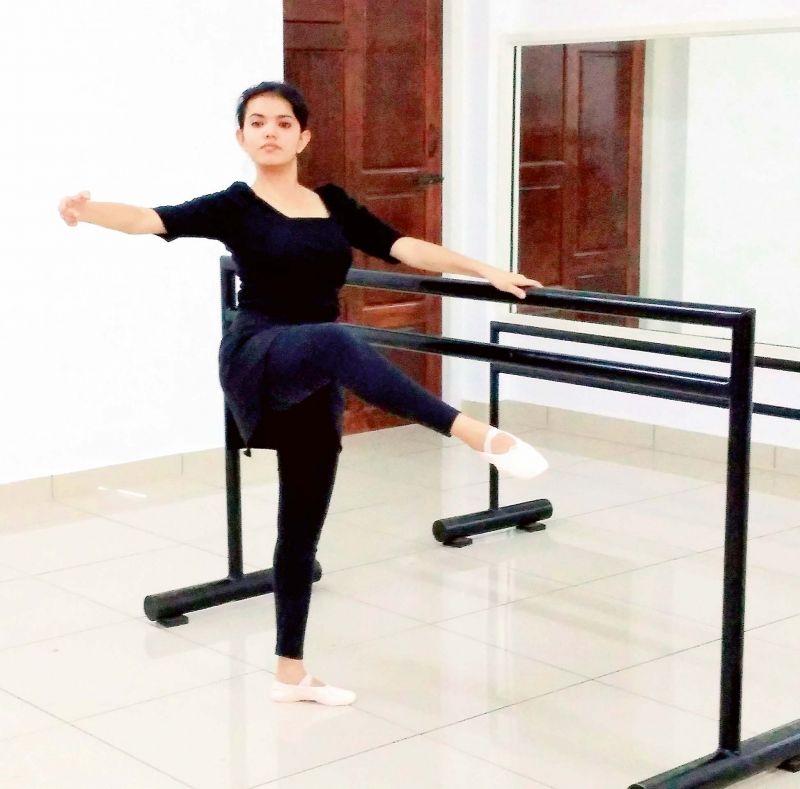
Attitude: (helps to strengthen the knees, inner thigh, quadriceps)
An attitude in classical ballet is a position where the dancer is standing on one leg with the other lifted, usually to the front (devant), back (derrière) or to the side (à la seconde). The leg in the air is bent at the knee so that it forms roughly a 145 degree angle.
(Khushi is a ballet dance trainer in Thiruvananthapuram and is the artistic director of On Pointe Ballet School)
